Search Images
Browse Content (p. 1307)
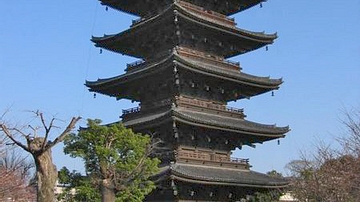
Image
Pagoda, To-ji Temple
The pagoda of the To-ji temple, Kyoto Japan. The temple was first built during the reign of Emperor Kammu (781-806 CE) and the pagoda added in 826 CE. It was subsequently destroyed by fires but then restored. It is the largest pagoda in Japan...

Image
Seal of Tutankhamun's Tomb
The unbroken seal on the inner third shrine of Tutankhamun's tomb, c. 1327 BCE. Photo by Harry Burton, 1922.
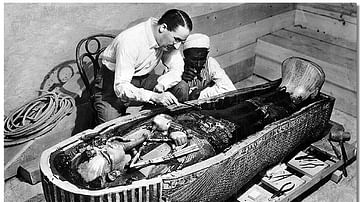
Image
Howard Carter & Tutankhamun
Howard Carter examining the sarcophagus and mummy of Egyptian pharaoh Tutankhamun (r. c. 1336 to c. 1327 BCE) in 1922.
New York Times Photo Archive.
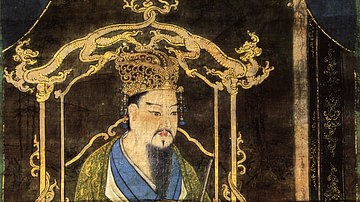
Image
Emperor Kammu
A 16th century CE portrait on silk of Japanese Emperor Kammu (r. 781 to 806 CE) who is most noted for relocating the capital to Heiankyo (Kyoto) in 784 CE. (Enryaku-ji Monastery, near Kyoto, Japan)
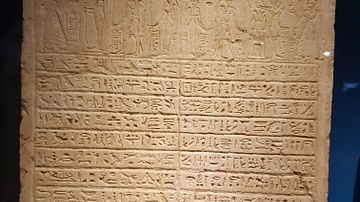
Image
Stela Of Padikhered & Tasherimehet
Stela Of Padikhered and Tasherimehet, Ptolemaic Period, 332-30 BCE. Found in Akhmim, Egypt. The British Museum (photo taken at The Powerhouse Museum, Sydney, Australia). This double stela was carved for two people - the scribe of Min...
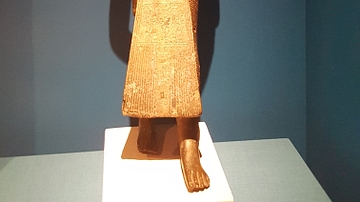
Image
Statue Of Khonsirdis
Statue of Khonsirdis, 26th Dynasty, 664-610 BCE. Provenance unknown. The British Museum, (photo taken at The Powerhouse Museum, Sydney, Australia) Khonsirdis wears the typical trappings of a priest. His head is shaved and he wears a leopard...
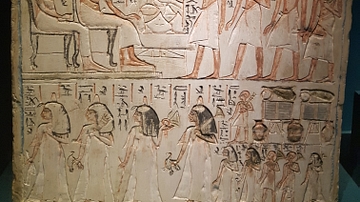
Image
Stela Of Qeh
Stela of Qeh, early 19th Dynasty, about 1250 BCE. Probably from Abydos, Egypt. The British Museum, (photo taken at The Powerhouse Museum, Sydney, Australia) Priests made offerings of food and drink to both the gods and the dead. Here...
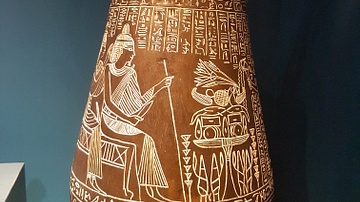
Image
Situla Of Hor
Situla of Hor, end of the Late Period to the beginning of the Ptolemaic Period, about 350-280 BCE. From Thebes, Egypt. The British Museum (photo taken at The Powerhouse Museum, Sydney, Australia). Situlae were important vessels used for...
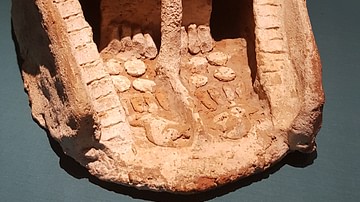
Image
Egyptian Model Soul House
Egyptian soul house, 12th Dynasty, about 1985-1795 BCE. Provenance unknown. The British Museum, (photo taken at the Powerhouse Museum, Sydney, Australia) Model houses placed in tombs were another way to ensure the deceased's eternal access...
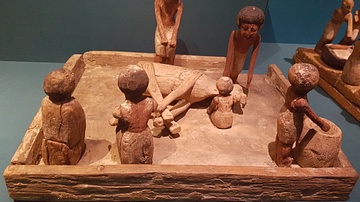
Image
A Bull's Slaughter (Wooden Funerary Model)
12th Dynasty, about 1985-1795 BCE. Provenance unknown. The British Museum, (photo taken at The Powerhouse Museum, Sydney, Australia) Wooden funerary model representing the slaughtering of a bull, enabling it to be sacrificed for eternity...